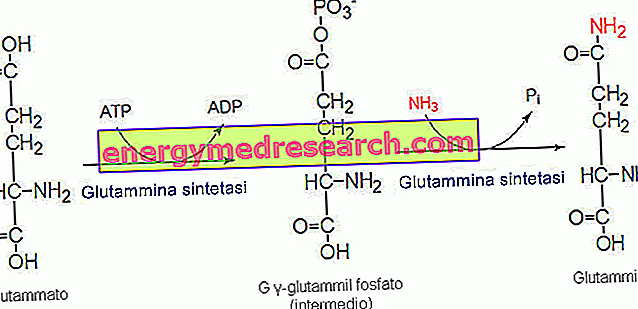Related articles: Gozzo
Definition
Goiter is a disorder characterized by an increase in thyroid volume. This anomaly can be a passing problem or a symptom of a more serious illness.
The enlargement of the thyroid may or may not be accompanied by alterations in the functionality of the gland (both in terms of a decrease → hypothyroidism, and in the sense of an increase → hyperthyroidism). According to the functional state of the thyroid, therefore, the goitre can be toxic (associated with hyperthyroidism) or non-toxic (it has no inflammatory or neoplastic origin, and is not accompanied by hyper- or hypo-thyroidism).
The goiter can be caused by congenital defects related to the process of synthesis of thyroid hormones or iodine deficiency (due to poor intake of the same or, more rarely, due to excessive ingestion of gozzigeni foods). Thyroid enlargement can also derive from the use of drugs, in particular those that can reduce the activity of the gland (eg amiodarone or other compounds containing iodine, lithium etc.). Other possible causes are inflammation of the thyroid gland, such as Hashimoto's thyroiditis, and tumor tissue proliferation. Non-toxic goiter is also observed transiently in puberty, during pregnancy and in menopause.
Most common symptoms and signs *
- Lowering of the voice
- Aphonia
- Dysphagia
- Dysphonia
- Dyspnoea
- Mass or swelling in the neck
- Knot in the throat
- Nodule
- odynophagia
- Paralysis of the vocal cords
- Hoarseness
- Squeal
Further indications
As for the symptoms, there is a common framework for all the various forms of goiter. Whatever its origin, thyroid goiter manifests itself with the appearance of a non-painful protuberance in the anterior region of the neck, which may be more or less evident. If the swelling is excessive, it can be an aesthetic problem and the mass can compress the trachea and esophagus below, causing hoarseness, problems in swallowing, a sense of suffocation and difficulty in breathing.
From the morphological point of view, it is possible to distinguish between diffused goiter (all the thyroid uniformly increases its size) and nodular goiter (characterized by one or more swellings circumscribed to only one part of the thyroid).
When the increase in the size of the gland is determined by hyperthyroidism or hypothyroidism, the characteristics of the underlying disease are added to the symptoms listed above.
Thyroid volume increase can be assessed with neck inspection, gland palpation and blood tests related to thyroid function (TSH levels, anti-thyroid antibodies, thyroxine and triiodothyronine dosage). The most frequently performed instrumental examinations in case of goiter are ultrasound and thyroid scintigraphy. Above all, the thyroid ultrasound evaluates the size of the swelling and the possible presence of cysts or nodules. Scintigraphy, on the other hand, determines the hypo- or hyperfunction of any identified nodules. If these swellings are suspected to be malignant, the aspirated needle makes it possible to clarify the nature of the nodule itself.
Treatment depends on the functional state of the thyroid and the size of the goiter. Therapy is not necessary if the goiter is contained and the patient is asymptomatic. When the thyroid gland is hypofunctioning or hyperfunctioning, instead, the treatment is directed to the underlying cause. In most of these cases, pharmacological or radiometabolic therapy allows a gradual reduction of goiter. If the enlargement of the thyroid is very voluminous, partial surgical removal of the gland may be necessary.



